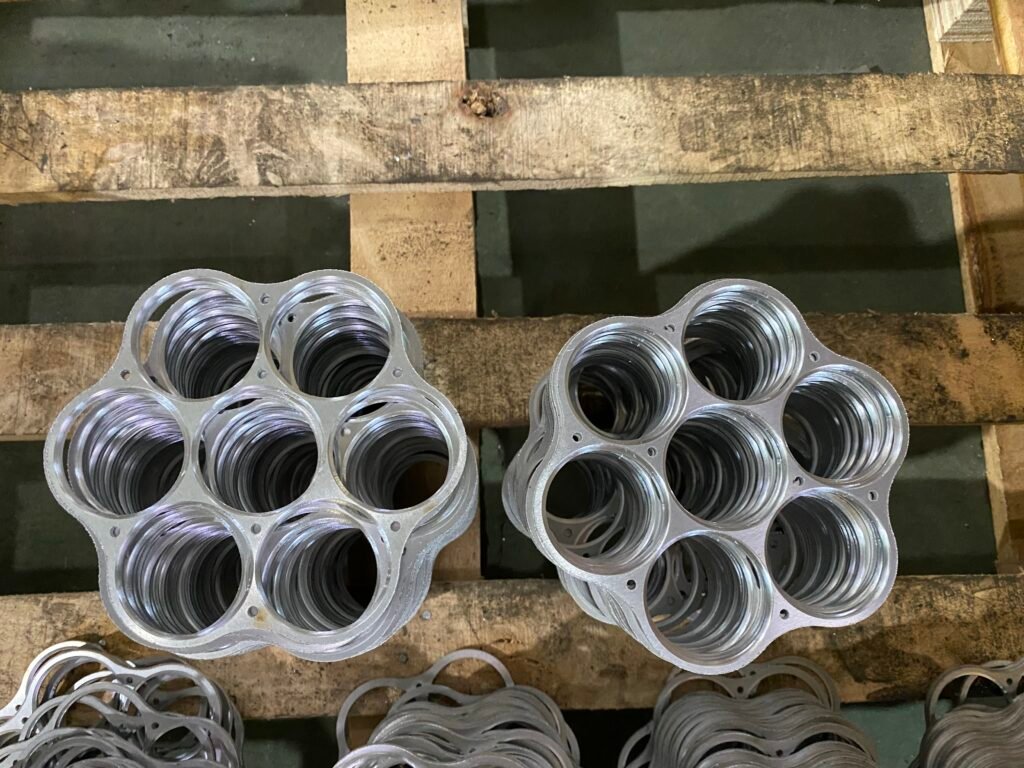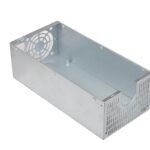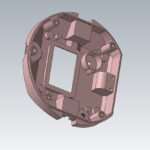While selecting a manufacturing process for metal parts, you need to determine which can complete your project in less time. You cannot pick the wrong one as it will alter the functionality of the components. In this article, we have covered the basic principles of each manufacturing process, their production speed, and the materials used. So, you can choose the right one.
How to Select the Fastest Manufacturing Process for Metal Parts?
Faster manufacturing of metal parts reduces time-to-market and increases profits. Even if you produce parts with on-demand manufacturing, you are entitled to choose the speed of your production process. Here we have highlighted the most common high-speed production processes:
Sheet Metal Fabrication
Fabrication is forming components from raw materials by combining two or more processes.
Sheet Metal Fabrication is a subtractive manufacturing process that involves forming parts from flat metal sheets. Design the parts in 3D CAD software and connect them with various manufacturing tools through written coding. You can cut, bend, stretch, or assemble the sheets into different shapes by combining all manufacturing processes.
Speed: You’ll find that Sheet Metal Fabrication requires various tools and machinery for each individual process. Hence, the short-run production and prototyping speed are lower than CNC Machining, which provides all-in-one processes.
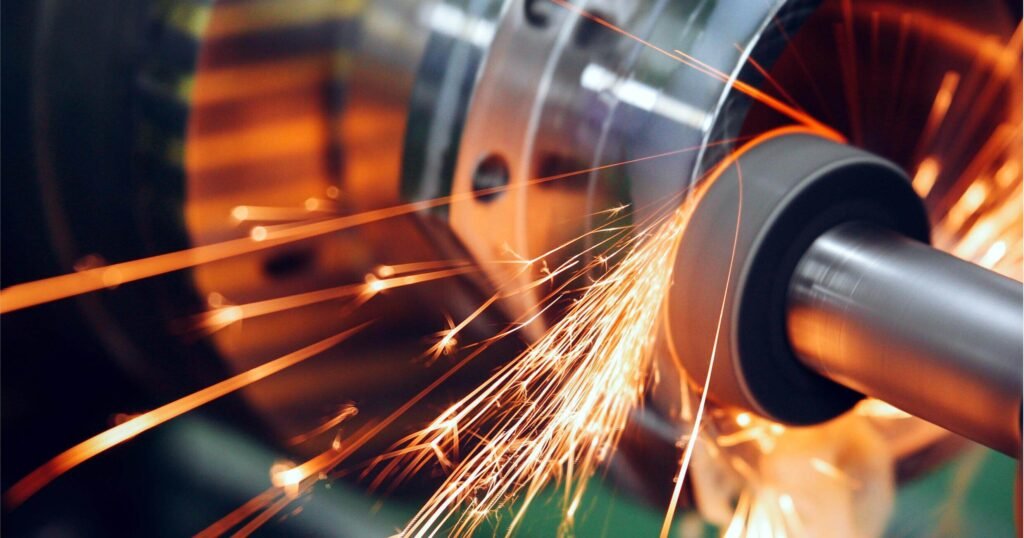
Best for Materials:
- Zinc.
- Aluminum.
- Copper.
- Steel.
- Stainless Steel.
These materials come in gauges ranging from 0.015 to 0.635 centimeters.
You can use this process for producing:
- Low-cost end-use applications like device panels, enclosures, brackets, boxes, cases, and chassis.
- Lightweight applications.
- Thin-walled components that are not possible or cost-effective to be built with CNC Machining.
- Projects which need complex designs, repeating shapes, and patterns.
CNC Machining
CNC stands for Computer Numerical Control, a method of automating the motion of machine tools through pre-programmed software.
CNC Machining is a computerized manufacturing process where the software controls the movement of complex machinery. The tools cut, shape, and create different metal parts through subtractive manufacturing, a controlled material removal process.
CNC Machining provides a fast manufacturing process for prototyping and short-run productions, where one production factor is fixed. Also, you won’t need any extra tools as the 5-axis machine reduces the time for multiple setups.
Speed: CNC machines are faster than manual ones, with a feed rate that can exceed 2,300 inches per minute (ipm).
A feed rate refers to the speed the tool advances through the workpiece and is usually measured in inches per minute.
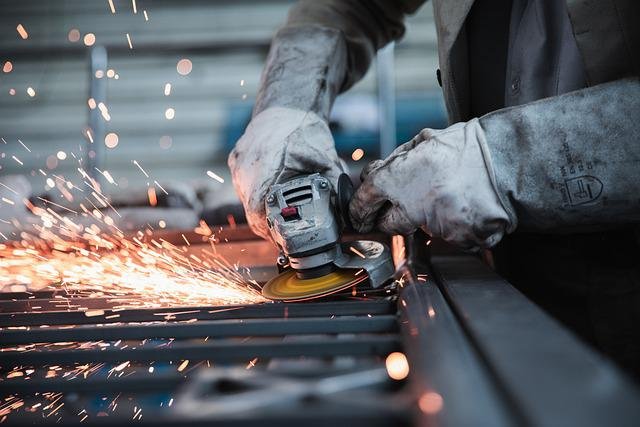
Best for Materials:
- Brass.
- Aluminum.
- Copper.
- Stainless Steel.
- Carbon steel.
You can use this process for producing:
- High-quality materials.
- Projects with tight tolerances meaning they have strict design parameters and require more precision and accuracy.
- On a scale of up to 10,000 parts.
- Projects that require custom finishes.
Metal Injection Molding (MIM)
Metal Injection Molding is a process that involves injecting raw powdered metal with measured polymer binders to make feedstock.
Binders shape and hold together the metal particles until the onset of the molding process. They are removed before sintering, a method to form and compact a solid mass of material through heat and pressure without liquefying it.
The feedstock mixture is solidified and further molded to form metal components with desired strength properties.
Speed: Metal Injection Molding is a two-step manufacturing process, and molding takes time. So, the short-run production and prototyping speed might be less. But once the metal injection shots are completed, you can instantly produce a high volume of metal parts.
Best for Materials:
- Steel.
- Stainless Steel.
- Tungsten Alloys.
- Cemented Carbides.
- Cobalt-Chromium.
- Copper.
You can use this process for producing:
- Small parts in high volume.
- Manufacturing complicated shapes that are not cost-effective with other processes.
- Finely detailed textures, engravings, profiled holes, and net shape features such as internal and external threads.
- Medical devices.
Metal 3D Printing
Metal 3D printing is an additive manufacturing process where you can create a metal design using 3D “CAD” software. The digital file is transmitted to the machine used for building components.
The process works by spreading a thin layer of metal powder and fusing the particles with the help of a laser. The process is repeated until the layers form a metal part.
Speed: It is a fast manufacturing process with a short setup time. However, it has concise production runs so that you can produce only ten units or less.
Best for Materials:
- Super Alloys.
- Aluminum.
- Tool Steel.
- Stainless Steel.
- Silicone-Carbide.
You can use this process for producing:
- Parts with complex geometries that are otherwise impossible.
- Replacement parts for legacy systems.
- Low-volume prototypes for functional testing.
There are many choices in Metal 3D Printing, but here we are mentioning only the renowned and most used ones:
Selective Laser Melting (SLM)
Selective Laser Melting, as the name suggests, Selective Laser Melting selects metal powder with a single melting temperature to melt it completely.
Best for Materials:
- Only selective metals.
- Stainless steel.
- Tool Steel.
- Titanium.
- Cobalt chrome.
- Aluminum.
You can use this process for producing:
- Metal equipment as a whole rather than components.
Direct Metal Laser Sintering (DMLS)
The Direct Metal Laser Sintering process uses a metal powder with variable melting points to fuse the particles at elevated temperatures.
Best for Materials:
- Almost all alloys.
You can use this process for producing:
Aerospace and automotive parts that operate under high stress.
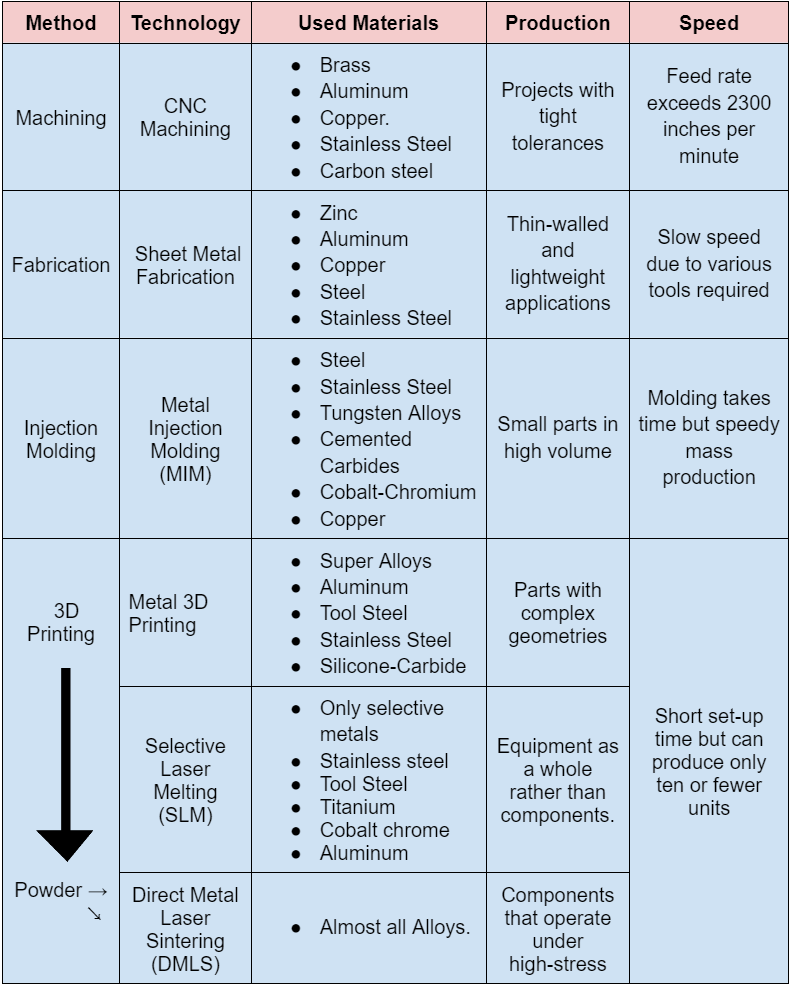
Principles of Design for Manufacturability (DFM) for Metal Parts
Design for Manufacturability works on five fundamental principles that you need to consider while designing your project. Following them will produce quality metal parts in a short time. Here they are:
1.Process
Choose the proper manufacturing process regarding the materials used, the surface complexity, and the required volume of parts. In some cases, the metal components don’t require complex manufacturing. So, choose wisely.
2.Design
Designing your project is vital. Don’t forget to discuss the design with your manufacturer. Only they can ensure that it conforms to the principles of the manufacturing process you’ve chosen. Your plan will include specifications, tolerances, thickness, and texture. But don’t specify tight tolerances where they are not needed.
3.Materials
It is essential to select suitable material for your project. Consider the material properties and choose one that is easy to process. For instance, CNC machines can cut aluminum quicker than steel. Contact your manufacturer as they may have existing materials so you can secure them at lower pricing.
4.Environment
Your project won’t matter if it won’t be operational under normal conditions. So, be sure to design it to withstand the environment in which it will be utilized.
5.Compliance
Your project should comply with industry and third-party safety and quality standards. Only give your project to a manufacturer who can provide quality assurance.
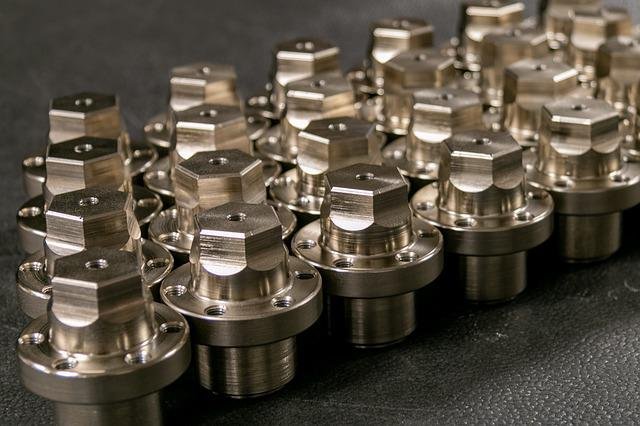
Conclusion
Quick manufacturing processes that can shorten production time for metal components are the need of the hour. After reading the article, we hope that you’ll now be able to choose materials and a manufacturing process suitable to your project needs. But be sure to keep your design free of ambiguities. Moreover, be clear about your objective to your manufacturer.
Having said that, at QBH Technology, we take pride in producing custom metal parts at competitive rates. We have decades of experience providing manufacturing services for CNC Machining, Laser cutting, server rack & cabinet, and much more. Our expertise includes CNC Machining and Metal Sheet Fabrication. We ensure to manufacture your product with great precision and accuracy in a short duration. Contact us for a free quote!

